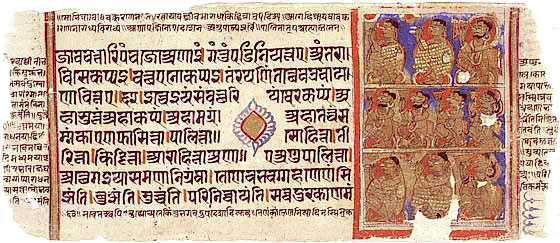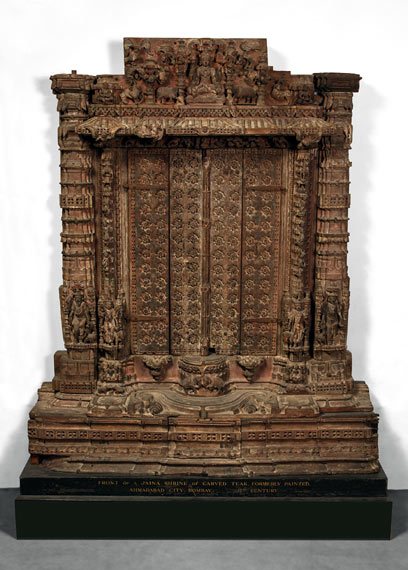The artistic traditions of the three major early Indian religions - Jainism, Buddhism, and Hinduism - all reflect the yogic ideal in their figural art. The commissioning of images which extol these virtues was an important aspect of the devotional activity of the lay community.
The ascetic, or yogi, free of possessions, spiritual and material, exemplifies the most honoured way of life in India. The artistic traditions of the three major early Indian religions - Jainism, Buddhism, and Hinduism - all reflect the yogic ideal in their figural art. The commissioning of images which extol these virtues was an important aspect of the devotional activity of the lay community. Indeed, among the areas of philanthropy identified in Jain ethical texts as most appropriate among the laity, the highest priority was given to the commissioning of images of the Jinas, the endowment of temples and the funding of scribes.
Historically, support came from the wealthy Jain laity, principally merchants who prospered from the trade that flowed through Gujarat from the coastal ports to the hinterlands of northern India. The kings of the Chalukya dynasty, which ruled Gujarat and much of Rajasthan and Malwa from the 10th to the late 13th centuries, were among the most generous patrons, building numerous temples and libraries.
Sculptures and illustrated manuscripts sometimes incorporate portraits of the patrons, usually represented as small-scale kneeling figures at the base or margins of a composition. These acts of patronage were seen as publicly beneficial as they would allow Jains at all levels of society to worship and learn on the path to ultimate liberation.
It was customary for a donor to commission a sculpture or manuscript for presentation to a named spiritual leader who would in turn present it to his temple for installation or for care in the temple library (bhandar). A dedicatory inscription recording this act of piety, usually dated, was typically added to each object upon presentation.
Wealthy Svetambara sect Jain households in Gujarat often had elaborate domestic shrines carved in wood. These sometimes took the form of doorways to the household puja room where small-scale images were housed.
Figures:
 |
Altarpiece with Three Jinas, donors depicted kneeling at and supporting the base, Gujurat, Western India, 1000. Copper alloy. Museum no. IS.10-1968. |
 |
Detail from a Kalpasutra manuscript depicting monks, laymen and laywomen worshipping, Gujarat, Western India. Late 15th - early 16th century. Opaque watercolour on paper. Museum no. IS.46:92r-1959. |
 |
Shrine with crystal image of Parsvanatha, Gujarat, western India, 1515. Copper alloy. Museum no. IM.3-1939. |
 |
Façade of a domestic shrine, Ahmedabad, Gujarat, western India, 17th-18th century. Teak with traces of pigment. Museum no. IM.342-1910. |
